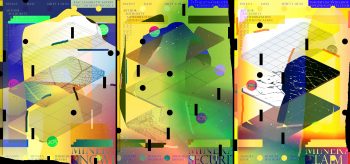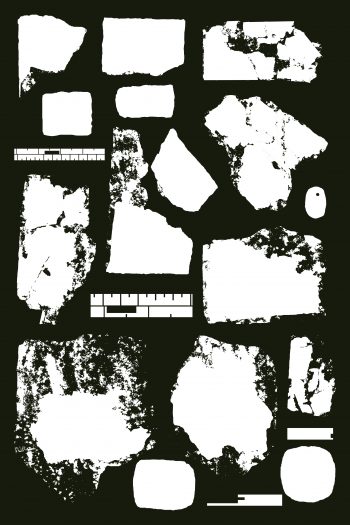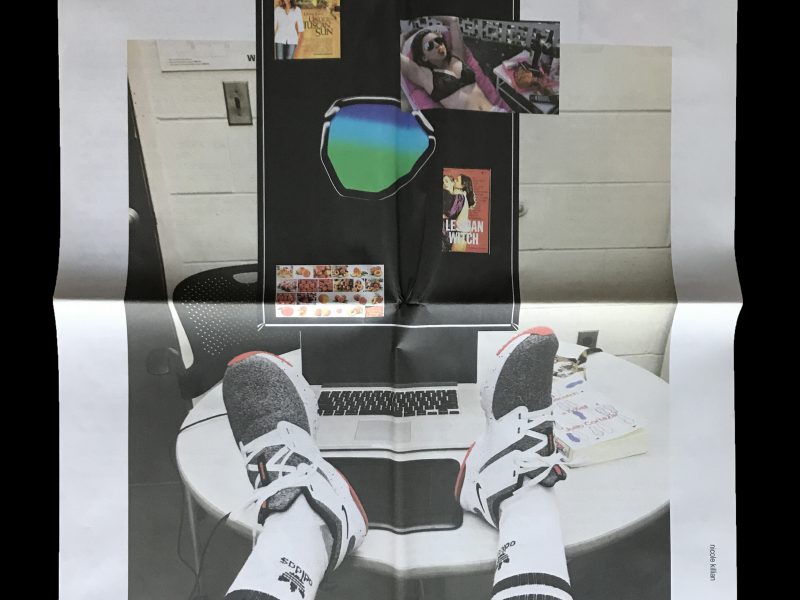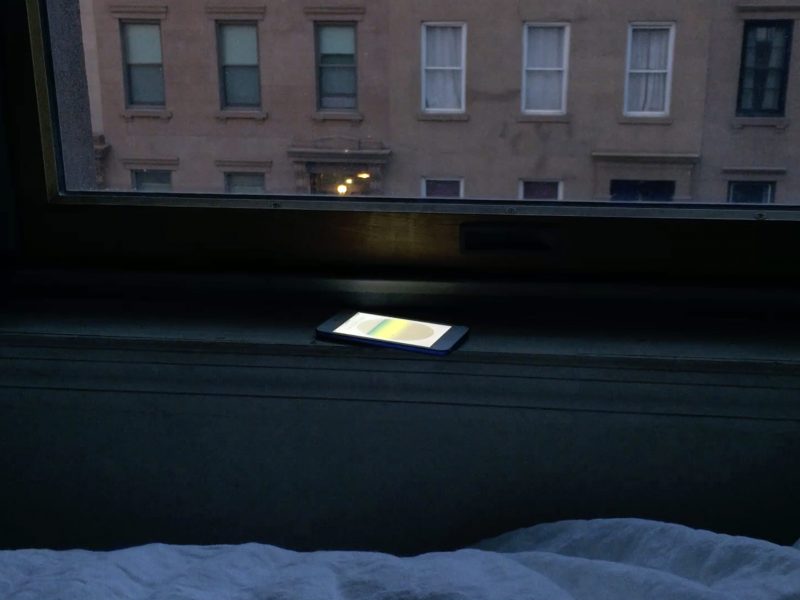Graphic designer and educator Chris Lee talks currencies and how to sustain a design research practice.
Favorite color: It has to be some kind of purple—like a deep purple, almost black.
Favorite typeface: Right now I’m using this typeface called Wremena a lot. It’s by this guy who goes by The Temporary State. I like his work. I think he puts his typefaces online for free and then he takes them down.
Album you’ve been listening to: Recently, in the car after work, I’ve been listening to Tsegué-Maryam Guèbrou. She’s an Ethiopian nun that has this delicate and idiosyncratic way of playing the piano. It’s just really relaxing.
Favorite book: I’ll say Lisa Gitelman’s Paper Knowledge. It’s not a very exciting answer, it’s just been really useful to my research.
Favorite book designer: I really like Harsh Patel.
Favorite movie: I want to make a mashup of Groundhog Day and Independence Day but I realized that was already made. It’s a Tom Cruise movie, the one where it’s the end of the world over and over again [Edge of Tomorrow]. If I had to choose one movie it would be Groundhog Day.
Favorite movie poster designer: A Polish poster designer, Waldemar Świerzy.
Currency that interests you: I’m interested in the kinds of currencies that were being issued during the Spanish Civil War in the republican-held territories. I read somewhere that, at one point, there were around 7,000 currencies in circulation there. It would be different currencies issued by different kinds of organizations, so you’d have a syndicate of café workers or a syndicate of barbers who would issue their own tokens, like IOUs or currencies. And farmers’ collectives—all these different kinds of organizations or groups were issuing their own currencies. I don’t know exactly how it works. I’ve never really been able to access the research well because I don’t read Spanish or speak it. There’s not a lot of stuff written about it, but it’s a fascinating period. Like, how many currencies do we use? We use maybe one or two, in terms of money currency, but at that time there were 7,000 in circulation. So it’s just interesting to me as this example of a way that people were organizing themselves and not necessarily relying on the centralized authority.
Something people may not know about you: I don’t know; I’m pretty open about stuff. Let’s just keep the not known stuff not known.
Any words of wisdom? Someone was asking how to sustain a research practice in design, and I think that’s a really interesting question. I don’t know if I have wisdom around that necessarily. I mean, I’ve managed to sustain some kind of research practice through design maybe more than I would have if I’d been practicing as a designer in the more conventional sense. But for graduate students who are looking to continue the kind of work that you guys are doing in graduate school, outside of graduate school, outside of the bubble of the university, one way that I managed to do that was to sneak in my research interests into a project. I wanted to do some more research about the Cree syllabary, for example, so I proposed to this client that we should set this book in Cree alongside English.
I also designed the catalog for the bookshop Art Metropole, and the idea was that people could order books from the catalog and, instead of having the shop ship the books to them, they could have the books banked or stored at the bookshop. The bookshop would issue the customer a serial number and the customer would write the serial number on the catalog cover. They would also tell them “this was the retail value of the books that you’re storing at the shop” and so, if you ordered $15 worth of books, instead of receiving them, you would get the serial number and you’d be told to write $15 on the cover. Then you could tear off that cover, and the conceit of this was that you could to go to any of the neighboring cafés, restaurants, or businesses and say “I have $15 worth of books banked at the shop down the street, will you accept this piece of paper as payment for this much?” Then if that café or restaurant owner wanted to retrieve the $15 or those books, they could take the certificate to the bookshop and do that. But no one did this, of course. I think it was maybe too convoluted a process or too risky or never worked. But that’s a couple of examples of the ways in which I try to bring in my research interests to these projects. I should say that these were both clients in the cultural sector. The one book with the Cree syllabary was for an art gallery, and the other one was an art bookshop. In those instances, it was sort of like there was leeway to wedge in some of my own research interests. I was also approached because people know that those are the kinds of things I’m interested in.
Anything else you’d like to add: I had a great time here [at CalArts] and hope to come back. It’s really interesting to see the kind of work that you guys are doing and the conversations that you’re having. Glad I could be here.

Screenshot of “Futeisha” (work in progress) for the “Celebrate People’s History” poster project by Interference Archive.
Chris Lee is a graphic designer and educator based in Buffalo, NY and Toronto. Through the genres of currency and documents, his research explores graphic design’s entanglement with power, standards, and legitimacy.




